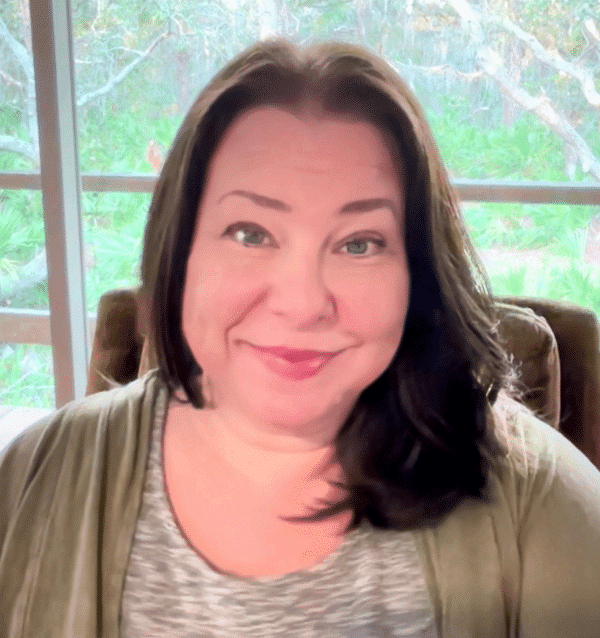If you have ever been to couples therapy, you know the unique blend of vulnerability, courage, and hope that fills the room. For many people, what happens behind those closed doors remains a mystery, something private and often misunderstood.
One way to better understand the process is to see it in action, and that is exactly what the Showtime series Couples Therapy offers. This documentary-style show follows real couples as they work with licensed therapist Dr. Orna Guralnik.
Couples Therapy provides an unfiltered look at the challenges, breakthroughs, and emotional journeys that unfold in therapy, allowing viewers to see both the hard work and the hope that are part of the process.
As I watched the show, I noticed familiar patterns from my own work as a couples therapist in California, Texas, and Florida. I recognized key moments that helped couples move closer together and moments that created distance. Some of it was constructive. Some of it was messy. All of it offered valuable lessons that can be applied in real life.
In this article, I will share five insights from the show that any couple can use, whether to strengthen a strong relationship or to find a new way forward in a struggling one.
Lesson 1: Pay Attention to the Small Moments
What stood out to me right away wasn’t the big blowups. It was the tiny moments, the eye roll when one partner starts talking, the slight pause before answering a question, the way someone crosses their arms and leans back when things get uncomfortable. These aren’t dramatic gestures, but they’re the ones that slowly chip away at connection.
I’ve seen how easy it is to miss these signs in day-to-day life. You’re busy, distracted, or just used to how things are. But small reactions like these can speak louder than any argument. They can signal frustration, disconnection, or even a loss of respect, long before either of you says, “We need to talk.”
If there’s one takeaway here, it’s to get curious when those moments happen. Notice them in yourself and in your partner. Ask why you reacted that way or why they did. You don’t need to analyze every facial expression, but paying attention early can help you address problems before they grow into something bigger. In relationships, the small moments are rarely small for long.

Lesson 2: Understand the Patterns You Create Together
Some couples on the show get stuck replaying the same argument over and over. With Josh and Natasha, for instance, the loop wasn’t about dishes or chores, it was about intimacy. Josh had a much higher level of sexual desire, and Natasha, after having a baby and struggling with postpartum body image, felt almost no spontaneous desire at all.
Here’s how it usually went: Josh would try to initiate, sometimes for sex, sometimes for simple closeness. Natasha would decline, not out of rejection, but because she didn’t feel any desire in that moment. Josh would take that “no” as personal rejection, growing frustrated and hurt. The more frustrated he felt, the more pressure she felt. That pressure made her want intimacy even less, which only deepened his sense of being unwanted.
It’s a cycle that can quietly take over a relationship. One partner’s need turns into the other’s avoidance, and before long, both feel misunderstood and alone. In their case, intimacy therapy revealed that Natasha’s lack of desire wasn’t about him. It was about how disconnected she felt from her own libido. She could enjoy touching or making out, but the expectation that it should lead to sex made even those small moments feel like a setup.
Patterns like this don’t fix themselves. The first step is seeing them clearly, naming what actually happens when you both get triggered. Once you can say, “When you push, I pull back” or “When I avoid, you get louder,” you have a better chance of breaking the loop. And breaking it, even once, can open the door to a new way of connecting.
Lesson 3: Communication Is More Than Talking
Annie and Mau from Season 1 showed how communication can fail when one partner treats serious conversations as optional. Married for over two decades, they often arrived at therapy carrying the same unresolved tension. Mau had a habit of leading with criticism or quick dismissal, sometimes aimed at Annie, sometimes at Dr. Guralnik. Even before sessions began, Annie would quietly ask him to “behave,” a sign that she’d learned to manage his volatility rather than expect him to manage it himself.
A big barrier for them was Mau’s tendency to approach their issues with a mix of entitlement and unseriousness. He expected his needs to be met without much effort on his part, and when Annie tried, he focused on whether her efforts met his exact standards. If they didn’t, he brushed them aside. That sense of “it has to be exactly how I want it” left little space for compromise and made genuine connection harder.
Even when deeper topics surfaced, like past experiences that clearly shaped how he related to Annie, Mau would deflect with humor or sarcasm. Those moments undercut any progress they might have made and kept the conversation on his terms. Annie’s perspective often got overshadowed by his urgency to be heard and his resistance to doing the uncomfortable work of change.
The lesson? Productive communication requires both seriousness and humility. You can’t expect to be heard if you dismiss, joke away, or dictate every conversation. Real progress comes when both partners share the floor and are willing to be uncomfortable long enough to actually understand each other.
Lesson 4: Redefine Love and Commitment on Your Terms
One of the clearest patterns in the show is how many couples feel stuck because they’re following a relationship script they never actually chose. Sometimes it comes from family influence, sometimes from early promises, and sometimes from assumptions about what a “real” relationship is supposed to look like.
In reality, commitment can take many shapes. Some couples marry, some build long-term partnerships without it, some blend families, and others choose open or polyamorous arrangements. None of these paths is automatically more valid than another, they’re just different ways of building a shared life. The trouble starts when two people don’t stop to ask: What does commitment mean to us right now?
Several couples on the show were frustrated, not because the love was gone, but because they were holding themselves to an outdated standard that no longer matched their reality. Progress happened when they stepped back, set aside outside expectations, and worked together to define their relationship on their own terms.
The lesson? Your relationship doesn’t have to follow anyone else’s blueprint. It works best when both partners are clear about their needs, boundaries, and shared vision, and when you keep checking in as life evolves.
Lesson 5: Don’t Wait for Crisis to Seek Help
One thing the show makes very clear is how often couples wait until things feel unfixable before they reach out for help. By the time they’re in the therapist’s office, years of resentment, miscommunication, and unspoken hurts have piled up. At that point, it’s not impossible to repair, but it’s a lot harder.
In California, where life can move fast and stress levels run high, it’s easy to push relationship check-ins to the bottom of the list. Careers, kids, personal goals, everything else takes priority until the tension starts to show. The couples who made real progress on the show weren’t necessarily the ones with the most dramatic problems. They were the ones willing to face the discomfort early, before the walls between them became too thick to break down.
Therapy isn’t only for moments when you’re on the brink. It can be a space to fine-tune communication, address small issues before they grow, and make sure you’re still aligned on your values and direction. Think of it less as a last resort and more as regular maintenance for your relationship.
Taking the Lessons Off the Screen
People have very different takes on Couples Therapy. Some see it as a brave look into real relationships; others feel it’s still a curated production. And they’re not wrong. Couples therapy is a deeply private journey, and what you see on screen is only a fraction of what actually happens. Much of the context, the quieter breakthroughs, and even some tension are edited out.
But even with those limitations, the show leaves behind lessons worth paying attention to. For California couples, whether you’re married, dating, living together, or building something outside traditional labels, the core message stands: relationships need ongoing care, honesty, and intentional effort.
That means addressing issues before they harden into resentment, continuing to learn about each other even years in, and defining commitment on your own terms. You don’t have to follow every example from the show, but you can use it as a springboard to reflect on your own patterns and choices.
Frequently Asked Questions
Is Couples Therapy scripted?
No, Couples Therapy is not scripted. It’s structured as a documentary series featuring real couples in therapy, filmed in a studio set that mimics Dr. Guralnik’s practice with cameras hidden behind one-way mirrors. While editing shapes the story, the conversations themselves are unscripted and authentic.
Where can I watch Couples Therapy?
You can stream the series on Paramount+ under the “Paramount+ with Showtime” tier. It’s also available on Showtime, and in some regions via platforms like Hulu or Prime Video, depending on licensing.
Who is Dr. Orna Guralnik?
Dr. Orna Guralnik is a New York City–based clinical psychologist and psychoanalyst. She hosts the series, and her approach blends psychoanalytic insight with systemic couples therapy. She’s also involved in clinical teaching and editorial work in psychoanalytic journals.
How many seasons of Couples Therapy are there?
As of mid‑2025, Couples Therapy has completed four full seasons, plus a special COVID‑focused segment, with a fifth season officially ordered and expected to continue airing soon.
– Written by the Relationship Reflections Team in collaboration with Debbie Cherry, LMFT

